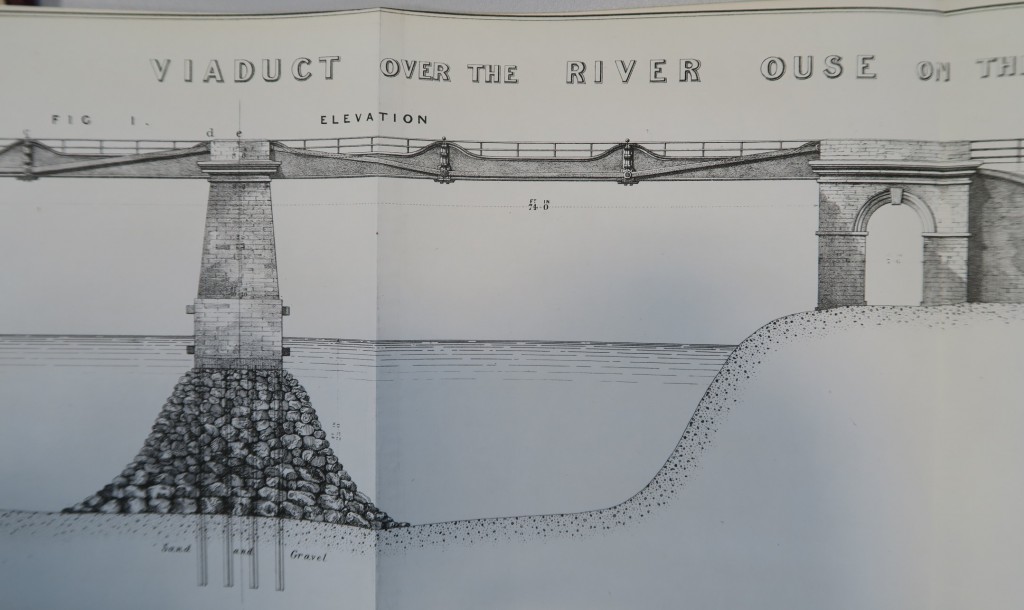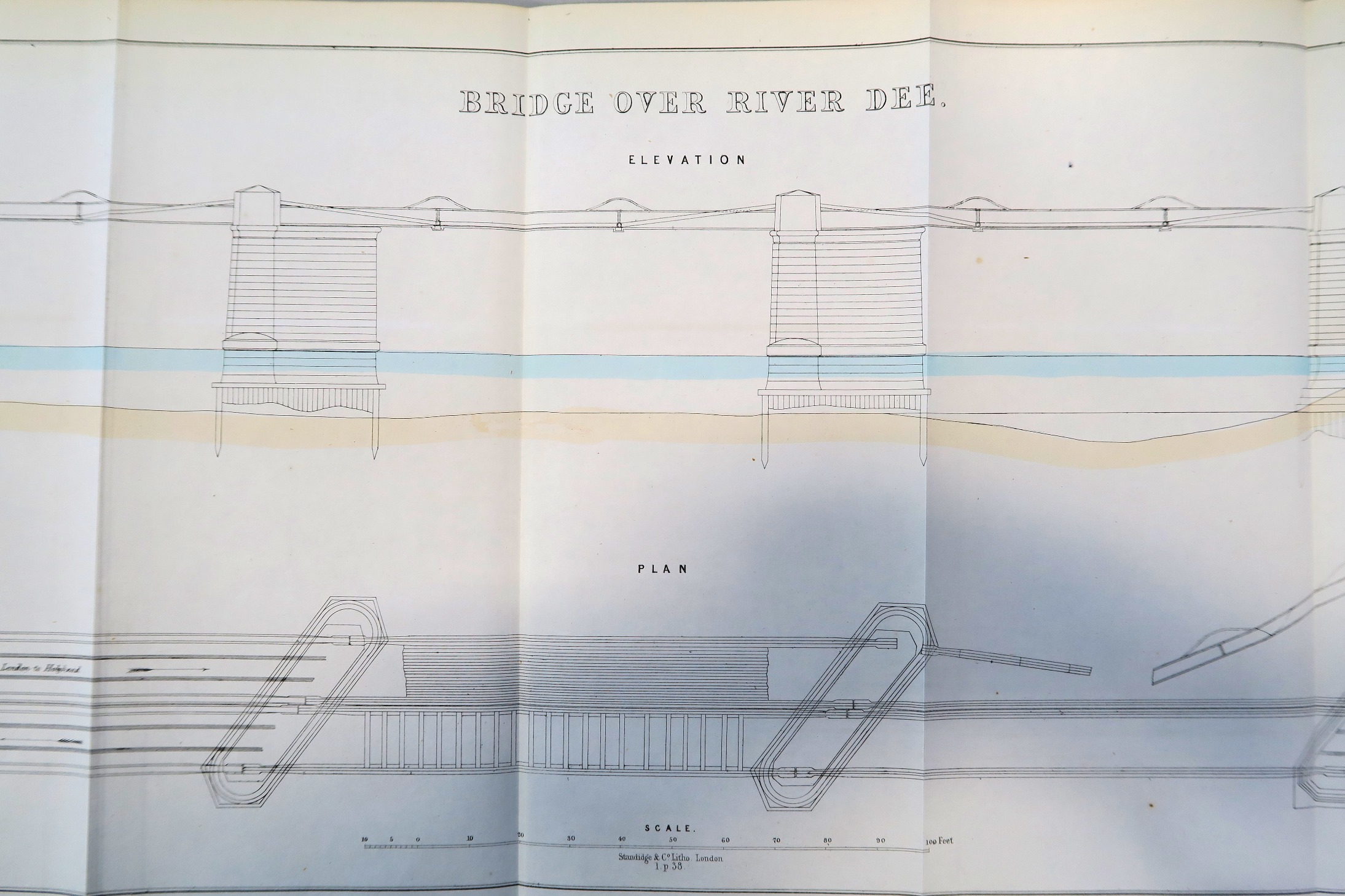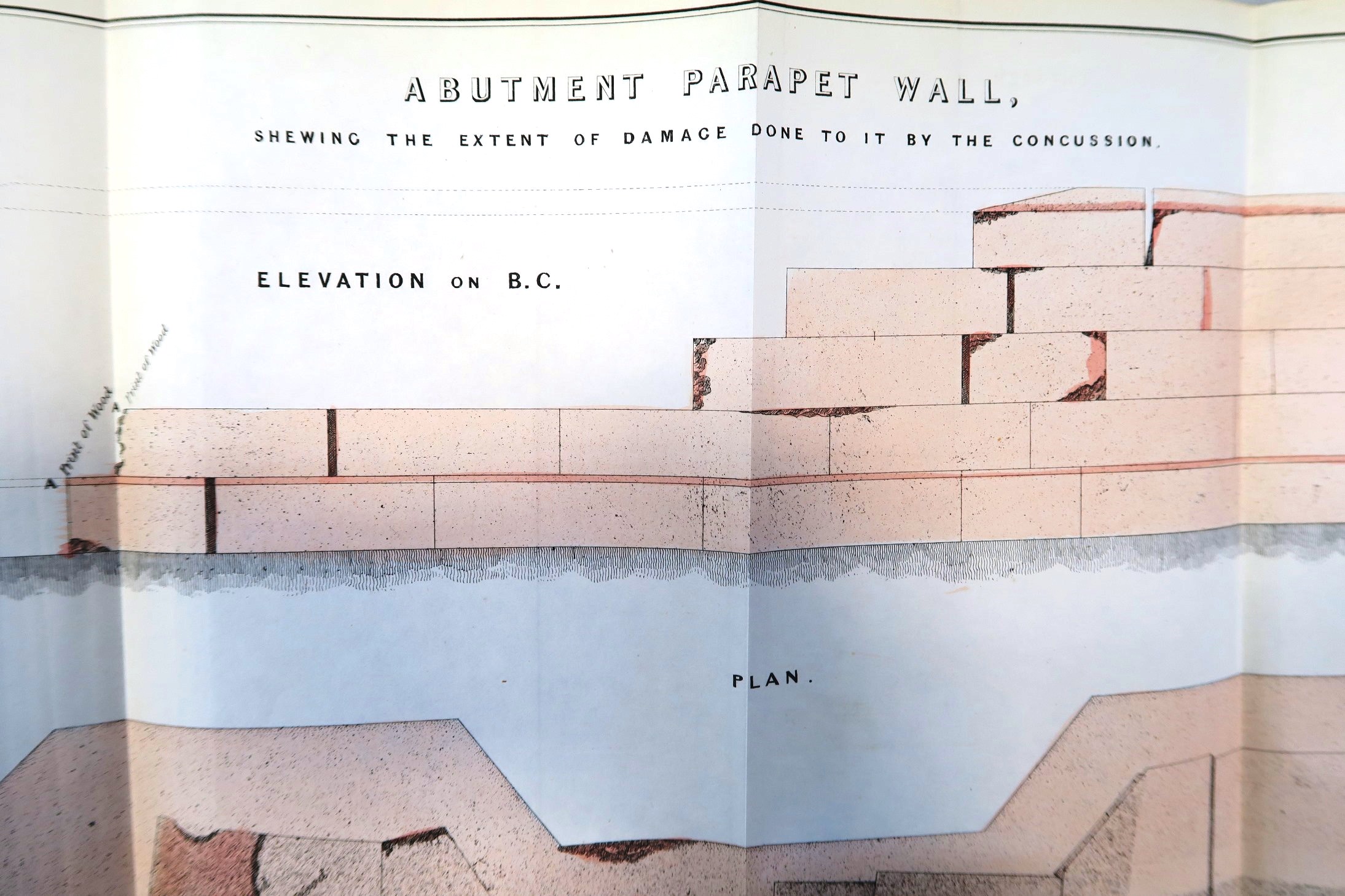Two of the main themes of the Parliamentary Papers are new railway lines and railway safety. The rapid spread of new railways during the 1840-1850 period led to a steep learning curve for engineers as they discovered that the increased weight and speeds of train meant that established construction techniques and materials were no longer adequate for the task.
One of the items in this report that caught my eye was a report on the construction of the York to Scarborough branch of the York and North Midland Railway. This includes an extensive description and drawings of the largest civil engineering feature on the line – the viaduct over the River Ouse in York, a structure that is just a short distance from the National Railway Museum.

As well as the obvious local interest, the bridge is also interesting as it has a connection to one of the first major railway disasters in Britain – the collapse of the bridge over the River Dee on the Chester to Holyhead Railway.
These bridges shared a similar design of trussed cast iron girders, and this method was one that was much favoured by the celebrated railway engineer Robert Stephenson, who had constructed a number of such bridges of this type on the various railways he was responsible for building. The bridge over the Dee had the longest span of any of them, and was initially opened in November 1846. Problems became obvious quite quickly as the weight of trains over the bridge caused fractures in some of the girders which had to be replaced. The newly repaired bridge re-opened but on 24 May 1847, as a train travelling from Chester ran over the final span, a girder cracked and broke and the carriages fell through the resultant gap into the water below. Four passengers were killed and many more injured, whilst the stoker of the engine also died.
The subsequent accident report is also within the Parliamentary Papers. An inquest started just 10 days after the accident and the report was presented to the inquest on the 18th June. Robert Stephenson came under great pressure, as the evidence suggested that the structure had failed mid girder and was a result of poor design or construction.
The major problem the use of cast iron girders as the material was too brittle for such use – it had a tendency to fracture when it flexed as a heavy train ran over it. Stephenson claimed that the train had derailed first and hit the abutment of the bridge which had resulted in the girder breaking. A number of eminent railway engineers supported him, despite the investigation providing no evidence to support the alternative theory.


The jury decided that the victims had died accidentally, but they also stated that the bridge had failed due to poor design and that girder bridges should not be made of cast iron in future.
The immediate outcome of the disaster was that similar bridges such as the one at York, were strengthened with props to reduce the amount of flexing of the girders, and bridges were then later replaced with stronger girder designs made of wrought iron or steel. The Ouse bridge, despite later rebuilding, still carries evidence of the emergency strengthening even now, as the pockets on the bridge abutments for the props remain in place – a reminder of a terrible early railway disaster.
A longer term result was a commission appointed to investigate the use of iron in railway structures, which published an extensive report in 1849 including a huge amount of technical analysis about the properties of various grades of iron.

Despite these efforts in better understanding the properties of materials used in bridge construction, failures continued to happen as engineers continued to push the limits of bridge design with ever larger structures and longer spans.
If you wish to see any of our collection of parliamentary papers, you can do so by contacting Search Engine, our library and archive centre.
Peter, are there any photographs or drawings of the Scarborough Bridge at York with the props in place? I believe the bridge was not rebuilt until 1875 but would expect the props to have been added soon after the Dee collapse. Do you know the material used for the props? Were they of cast iron or wrought iron were they timber?
Hello Thomas, Thank you for your comment that I’ve only just noticed, hence the delayed reply! I don’t have specific information on the props used on the bridge in York, but on other similar bridge the props were timber. I have never come across any photographs with the props in place, and we don’t have any drawings either, although if any exist, Network Rail may hold them in their archives.
Peter,
I am researching the 1847 Dee Bridge disaster for a fresh view of the reasons for the failure. Am due to present to the Institution of Structural Engineers History Group in June 2022. The APPENDIX by Captain Simmons to the Report of the disaster includes some tables of measurements he made on the surviving girders of the bridge. From the copy of the report downloaded from Railways Archive the various measurements are unreadable. Can you possibly advise how i could obtain clearer figures ?
Thank you,
Alan Hayward FREng CEng FICE FIStructE. Retired Bridge Engineer
Are there please any available drawings or illustrations of the Dee Bridge of 1847, the original York Ouse Bridge or the Tees Bridge, all as built with wrought iron trussed cast iron girders. I am giving a paper to the Institution of Structural Engineers in June 2022, featuring the Dee Bridge disaster, but already have most of the published documentation
Regards and thank you,, Alan Hayward FReng CEng FICE FIStructE